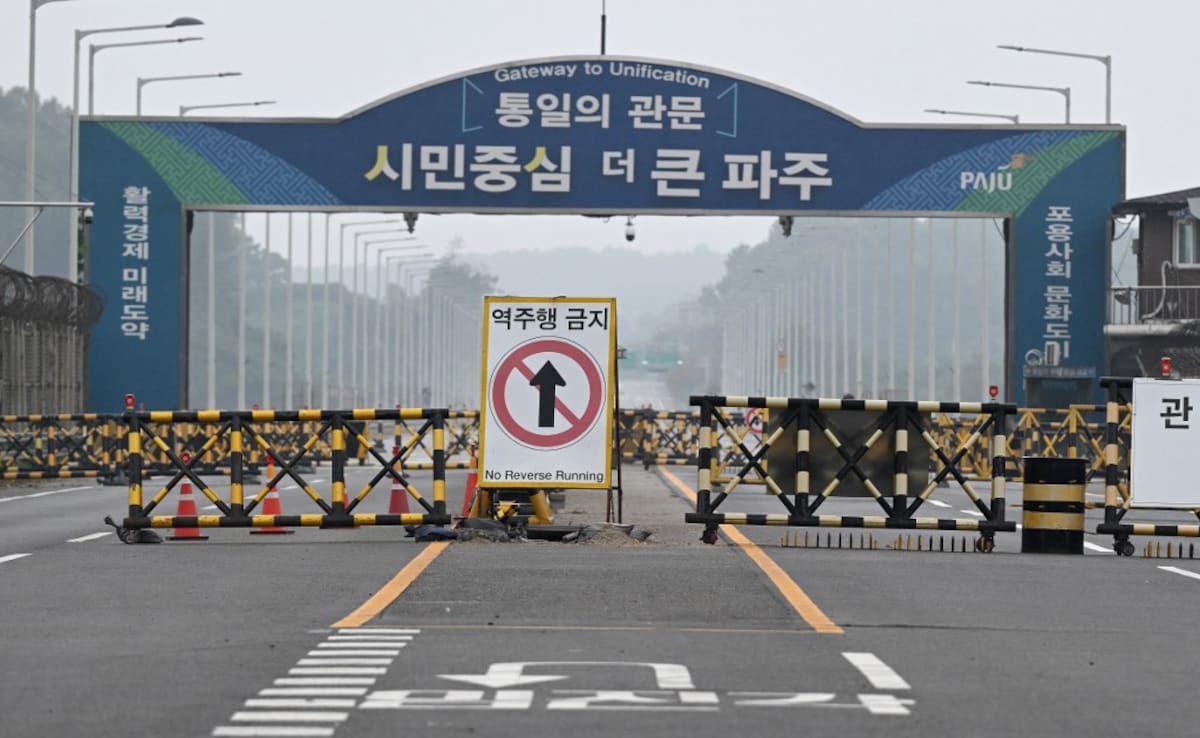North Korea on Tuesday blew up sections of the deeply symbolic roads connecting it to the South, Seoul’s military said, adding it had conducted a “counter-fire” operation in response.
Pyongyang’s military last week vowed to permanently seal its southern border after spending months laying mines and building anti-tank barriers in the wake of leader Kim Jong Un’s declaring the South his country’s “principal enemy”.
Last week, North Korea accused Seoul of using drones to drop anti-regime propaganda leaflets on the capital Pyongyang, with Kim convening a security meeting to direct a plan of “immediate military action” in response, state media reported Tuesday.
“North Korean has detonated parts of the Gyeongui and Donghae roads north of the Military Demarcation Line,” the Joint Chiefs of Staff said Tuesday, referring to inter-Korean infrastructure that once connected the two countries.
“There has been no damage to our military, and our forces conducted counter-fire in areas south of the MDL,” it added.
The roads have long been shuttered, but destroying them sends a clear message that Kim is not prepared to negotiate with the South, experts said.
“This is a practical military measure related to the hostile dual-state system that North Korea has frequently mentioned,” Yang Moo-jin, president of the University of North Korean Studies in Seoul, told AFP.
The North may also be looking to erect more physical barriers along the border, Yang said, adding that the road detonations could be “preparatory work for its construction of those walls”.
Drones?
Seoul’s military initially denied sending drones north but has subsequently declined to comment, even as Pyongyang has blamed them directly, warning it would consider it “a declaration of war” if another drone was detected.
Activist groups have long sent propaganda northwards, typically by balloon, and enthusiasts are also known to have flown small, hard-to-detect drones into the North.
Unlike conventional drones made of metal, the devices they used were constructed from expanded polypropylene, similar to Styrofoam, allowing them to go undetected by both South and North Korean authorities, according to enthusiasts who spoke to local media.
At Kim’s meeting Monday, officials heard a report on the “enemy’s serious provocation”, said KCNA, adding Kim had “expressed a tough political and military stand”.
The North has said the United States, which has a military alliance with South Korea, should also be held responsible.
North Korea has itself sent drones southwards — in 2022, five of Pyongyang’s drones crossed the border, prompting the South Korean military to fire warning shots and deploy fighter jets.
The jets failed to shoot down any of the drones.
In July, Seoul said it would deploy drone-melting lasers this year, saying the South’s ability to respond to provocations would be “significantly enhanced”.
The new laser weapons — dubbed the “StarWars Project” by the South — shoot an invisible, silent beam that costs just 2,000 won ($1.45) per use, according to the Defense Acquisition Program Administration.
Relations between the two Koreas are at their lowest point in years, with the North’s army saying last week it would permanently shut the southern border by “completely cutting off roads and railways” connected to the South and building “strong defence structures”.
Following Kim’s meeting in Pyongyang, “attention is turning to whether North Korea will respond by sending drones into the South or take strong action if drones infiltrate its territory again”, said Cheong Seong-chang of the Sejong Institute.
“North Korea is likely to engage in strong provocations along the border if there is a recurrence of drone infiltrations,” Cheong told AFP.














